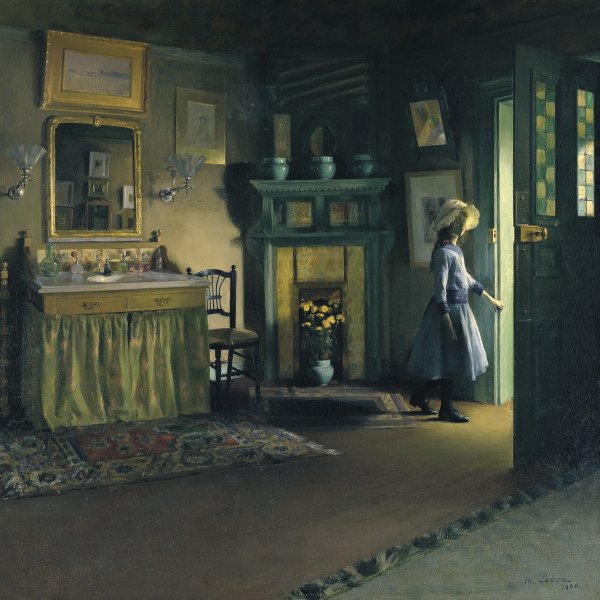Maurice Lobre
Maurice Lobre was born in Bordeaux on 15 November 1862. He was trained in Paris where he was a pupil of Jean-Léon Gérôme and of Carolus-Duran at his private academy. He showed at the Salon for the first time in 1882 and took part (together with Whistler, De Nittis, Carrière and Jacques-Émile Blanche) in the annual exhibitions which took place from that year onward in the gallery of the art dealer Georges Petit. Lobre was fascinated by the work of Manet and Whistler, as was his fellow pupil Ramón Casas, whom he painted and with whom he travelled to Madrid in early 1885 to study the masterpieces in the Prado, particularly those of Velázquez. In 1887-1888 Lobre showed his work at the first exhibition of the Société des Trente-Trois, formed by a group of artists and sculptors who classed themselves as independents, which took place at the Galerie Georges Petit, showing with artists such as Khnopff and Odilon Redon. In 1888 Lobre obtained an honorary mention in the Salon and was awarded a travel grant. He won the gold medal at the universal exhibitions of Paris in 1900 and Munich in 1905. In 1908 he took part (together with artists such as Aman Jean, Le Sidaner and Blanche) in the Exposition Franco-Anglaise at the Palais des Beaux-Arts, showing the painting Facade of the Palace of Versailles. Lobre was made a chevalier of the Légion d'Honneur and later an officier. He died in Paris in March 1951.
A painter of portraits and genre subjects, Lobre was most noted for his ability to recreate the mood of interiors, and in particular for his prolific body of work devoted to interiors of the Palace of Versailles (such as The Vestibule, The King's Library, The Salon of Madame Adelaide, The Dauphin's Bedroom) and of the Petit Trianon (for example, The Salon of Marie-Antoinette in the Petit-Trianon, The Staircase of the Petit Trianon). His painting The Salon of Louis XV was given by the French State to the Czar of Russia. His paintings are to be found in public collections such as the Musée d'Orsay, the Hermitage and the museums of Lyon and Bordeaux.
Guillermo Solana





